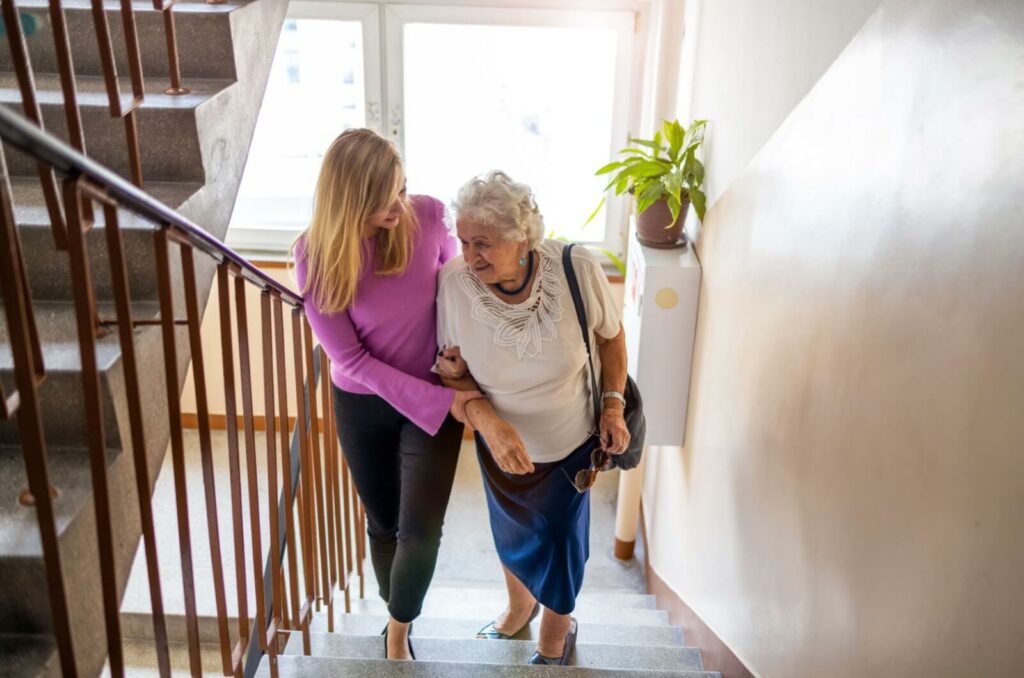Being a caregiver can be an immensely rewarding experience, but it can also be challenging and overwhelming. While we love and care for our loved ones, we are all human, and sometimes we need support and rest. In these situations, respite care may be worth considering.
Respite care is short-term, temporary care that gives caregivers the opportunity to rest and recharge while providing loved ones the support they deserve.
Respite care often takes place in senior living communities, thus allowing people in respite care to access the services, amenities, and recreational opportunities available in these communities. It’s also a way for people to test out long-term assisted living.
Learn more about respite care and how it can benefit you and your family.
What Is Respite Care?
Respite care is temporary care intended to give family caregivers a break from their caregiving responsibilities.
By having a loved one receive short-term care from someone else, caregivers can spend time with other loved ones, catch up on responsibilities, or even go on a much-needed vacation.
When to Consider Respite Care
Respite care may be suitable when:
- A loved one needs extra support to recover after a hospital stay, surgery, or illness
- A scheduling conflict causes a caregiver to be temporarily unavailable
- A caregiver can benefit from a break to attend to other responsibilities or rest
If you’ve ever been curious about what life in a senior living community is really like, a respite stay is an opportunity to experience it first-hand.
Benefits for Caregivers
Respite care offers caregivers peace of mind. You can trust that a professional caregiver with access to community resources is looking after your loved one. Short-term care can allow caregivers to:
- Take care of other responsibilities, such as caring for children or catching up with work
- Attend to their own health needs, such as doctor appointments or therapy sessions
- Take a break & care for themselves, whether they recharge at home or go on vacation
Respite care can also help caregivers avoid and recover from burnout.

What Is Caregiver Burnout?
Caregiving is an honorable undertaking but can also be tiring and overwhelming. Anxiety, depression, and physical and emotional fatigue may indicate caregiver burnout. This experience is relatively common, affecting around 60% of caregivers.
Signs and symptoms of caregiver burnout include:
- Social withdrawal
- Lack of interest in once enjoyable activities
- Low-quality sleep & exhaustion
- Trouble with focusing
- Falling ill more often
- Irritability & hopelessness
Burnout can happen to family members, partners, friends, and even professionals who work in caring fields.
The Risks of Caregiver Burnout
Caregiver burnout isn’t just unpleasant to experience; it can lead to serious consequences. Feeling burnt out can raise a person’s risk of developing physical and mental health issues.
Being too tired and overwhelmed by a loved one’s needs can lead a caregiver to neglect their own health. And when you’re sick or exhausted, it inhibits your ability to provide quality care for the person in your charge.
Caregiving can lead to complex emotions like anger, guilt, denial, and loneliness. If you feel hesitant to ask for help, remember caregiving often involves heavy emotional labor. Caregivers are humans, too, and you deserve rest and support.
You can also think of it as investing in your loved one. By taking care of yourself, you can provide a higher quality of care for your loved one.
Finding Respite Care
You can contact family, friends, or in-home professional providers for temporary respite care. Adult day care centers, health care facilities, and senior living communities like Inspired Living at Ocoee also offer respite care programs.
If you’re looking for respite programs, ask questions early so you can make choices you (and your loved one) can feel comfortable with, including questions about costs and whether financial assistance is available.
Costs of Respite Care
According to the National Institute on Aging, people in hospice care are eligible for Medicare coverage for up to 5 days in a row of respite care in a hospital or skilled nursing facility. They may also qualify for Medicaid support.
While most private health insurance plans do not cover respite care, some long-term care insurance plans offer some coverage.
Respite Care in Ocoee at Inspired Living
Everyone deserves a break at some point. By caring for their physical, mental, and emotional needs, a caregiver can return to their role re-energized, happier, and healthier.
A respite stay also offers a loved one in care a change of scenery, new opportunities, additional resources, and maybe even new faces to befriend.
Inspired Living at Ocoee is a senior living community that values health and wellness. Programs like Distinctive Destinations—where residents can sample menus from around the world in the comfort of their home—highlight our commitment to enriching our residents’ quality of life.
We welcome caregivers and loved ones to book a tour to learn more about what a respite stay may look like and explore what our community can offer.









